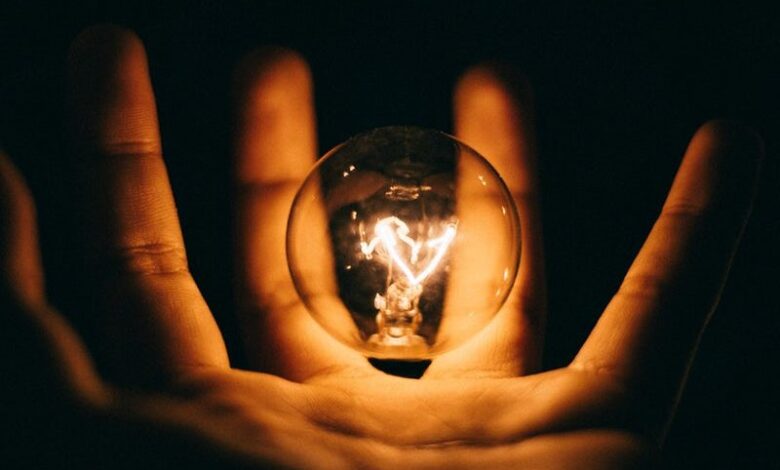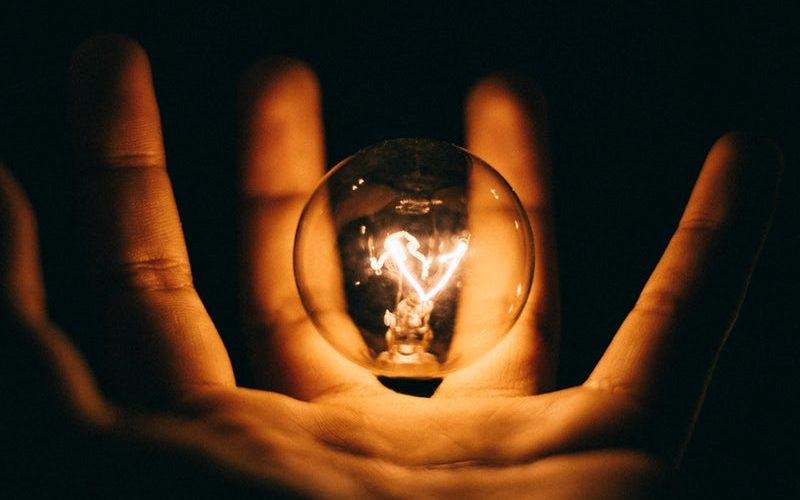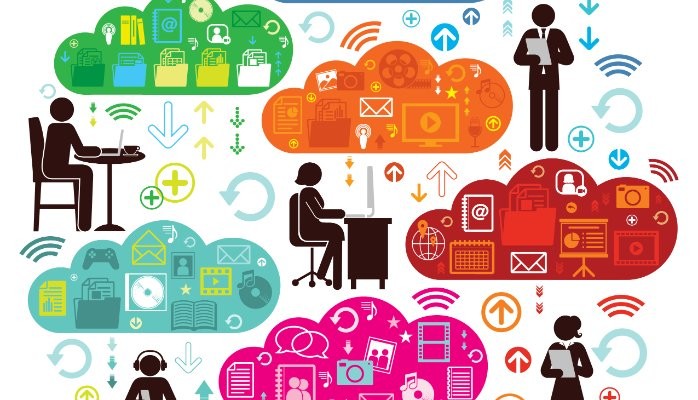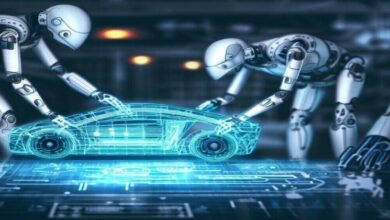How Innovation Creates Consumer Demand


The relationship between innovation and consumer behavior represents one of the most dynamic forces in modern economics. Rather than simply responding to existing consumer needs, breakthrough innovations actively create new markets and generate demand for products and services that consumers never knew they wanted. From the smartphone revolution to streaming entertainment and smart home ecosystems, innovation doesn’t just satisfy demand—it ignites it through psychological triggers, technological capabilities, and strategic market creation. This comprehensive analysis explores the mechanisms through which innovation stimulates consumer desire, transforms markets, and creates entirely new categories of demand that drive economic growth and cultural transformation.
A. The Psychology of Innovation-Driven Demand
Understanding how innovation creates demand requires examining the psychological mechanisms that transform technological possibilities into consumer necessities.
A. The Aspiration-Accessibility Paradox: Innovative products often create demand by making previously exclusive experiences accessible to broader markets.
-
Luxury Democratization: Companies like Tesla transformed electric vehicles from practical but uninspiring transportation into desirable status symbols, creating massive demand by combining sustainability with premium features and performance previously available only in luxury sports cars. By making electric vehicles aspirational rather than merely practical, Tesla expanded the market beyond early adopters to mainstream consumers.
-
Professional-Grade Consumer Products: Innovations like Adobe Creative Cloud and Salesforce democratized capabilities previously available only to large enterprises, creating demand among small businesses, freelancers, and even hobbyists who now expected professional-grade tools. This accessibility created new use cases and demand patterns that simply didn’t exist before these innovations reached the mass market.
-
Health and Wellness Personalization: Wearable devices like Apple Watch and Fitbit created demand for continuous health monitoring by making hospital-grade tracking available to consumers. The innovation didn’t respond to existing demand for constant heart rate monitoring but created it by demonstrating the value of proactive health management.
B. The Convenience Revolution: Many innovations create demand by eliminating friction and solving problems consumers had learned to tolerate.
-
Instant Gratification Ecosystems: Amazon Prime transformed consumer expectations around delivery times, creating demand for rapid fulfillment that competitors struggled to match. What began as a loyalty program became an industry standard that raised consumer expectations globally, generating demand for services that could deliver similar convenience.
-
Frictionless Payment Systems: Innovations like Apple Pay and Google Wallet created demand for contactless payments by making transactions faster and more secure. Consumers who initially saw little need for mobile payments quickly adopted them once they experienced the convenience, demonstrating how innovation can create demand by eliminating minor but frequent annoyances.
-
Streaming Entertainment: Netflix and Spotify didn’t simply digitize existing media consumption—they created demand for on-demand, ad-free, personalized entertainment experiences. The innovation generated expectations around content accessibility that fundamentally changed how consumers value and consume media.
C. Social Proof and Network Effects: Innovations often create demand through social dynamics and interconnected value.
-
Visual Social Platforms: Instagram created demand for smartphone photography and visual storytelling by making image-sharing social and competitive. The platform didn’t just satisfy existing photography interest but generated massive demand for better phone cameras, photo editing apps, and even influencer marketing services.
-
Collaborative Tools: Slack and Microsoft Teams created demand for workplace communication platforms by demonstrating how integrated messaging could replace email for internal communications. The network effect—where each additional user increases the platform’s value—accelerated adoption and created self-reinforcing demand cycles.
-
Gaming Ecosystems: Platforms like Steam and Epic Games created demand for digital game distribution by building communities around gaming. The innovation transformed gaming from a solitary activity into a social experience, generating demand for features like friend lists, achievement systems, and community marketplaces.
B. Technological Capabilities Driving Demand Creation
Specific technological breakthroughs have consistently demonstrated the power to generate consumer demand by enabling previously impossible experiences.
A. Mobile Computing Revolution: The smartphone represents perhaps the most significant demand-creation innovation of the 21st century.
-
Always-Connected Lifestyle: The integration of powerful computing, constant connectivity, and intuitive interfaces in devices like the iPhone created demand for mobile-optimized services across industries. Consumers quickly developed expectations around instant information access, mobile shopping, and on-the-go entertainment that simply didn’t exist before smartphones became ubiquitous.
-
App Ecosystem Economics: Apple’s App Store and Google Play created demand for mobile applications by providing distribution and monetization platforms. This innovation generated entire industries around mobile gaming, productivity tools, and lifestyle applications, with consumer spending on mobile apps projected to exceed $270 billion by 2025.
-
Camera and Content Creation: Progressive improvements in smartphone camera technology created demand for visual content creation and sharing. Features like portrait mode, night photography, and 4K video transformed ordinary consumers into content creators, generating demand for complementary products like stabilizers, editing software, and accessory lenses.
B. Artificial Intelligence Personalization: AI-driven customization has created demand for tailored experiences across consumer categories.
-
Recommendation Engines: Algorithms used by Amazon, Netflix, and Spotify have trained consumers to expect highly personalized content and product suggestions. This innovation has created demand for customization so pronounced that consumers now feel frustration when confronted with generic, one-size-fits-all experiences.
-
Predictive Service Platforms: AI systems that anticipate consumer needs—from Google Maps predicting destinations to food delivery apps suggesting orders—have created demand for proactive service. Consumers increasingly expect companies to understand their preferences and patterns without explicit instruction.
-
Conversational Interfaces: The rapid improvement of chatbots and virtual assistants has created demand for natural language interactions with technology. As these systems become more sophisticated, consumer expectations around conversational commerce and support continue to rise.
C. Connectivity and IoT Ecosystems: The proliferation of connected devices has created demand for integrated experiences.
-
Smart Home Integration: Products like Amazon Echo and Google Nest created demand for connected home ecosystems by demonstrating the convenience of voice-controlled environments. The innovation generated consumer interest in smart lighting, thermostats, and security systems that work together seamlessly.
-
Wearable Ecosystems: The success of devices like Apple Watch created demand for interconnected health and fitness tracking. Consumers now expect their wearable data to integrate with other applications and services, creating market opportunities for compatible products and platforms.
-
Cross-Device Experiences: Innovations like Apple’s Continuity and Microsoft’s Phone Link have created demand for seamless transitions between devices. Consumers increasingly expect to start tasks on one device and continue effortlessly on another, generating demand for ecosystem compatibility rather than standalone products.
C. Market Creation Through Innovative Business Models
Beyond technological features, innovative business models have repeatedly demonstrated the power to create consumer demand by changing how value is delivered and captured.
A. Subscription Economy Transformation: The shift from ownership to access has created demand for ongoing relationships rather than one-time transactions.
-
Software-as-a-Service Revolution: Adobe’s transition from selling Creative Suite licenses to offering Creative Cloud subscriptions created demand for constantly updated, cloud-connected creative tools. The innovation transformed customer relationships from occasional transactions to ongoing engagements, generating stable revenue while providing continuous value.
-
Transportation Subscriptions: Services like Uber Pass and Lime Prime created demand for subscription-based mobility by bundling services and reducing per-use friction. Consumers who might not have regularly used ride-sharing or scooter rentals found themselves using these services more frequently once the mental transaction cost was eliminated.
-
Content Subscription Bundles: Platforms like Amazon Prime created demand for bundled services by combining shipping, video, music, and reading into single subscriptions. This model generated consumer expectations around service integration that single-purpose providers struggle to match.
B. Sharing and Platform Economies: Innovative platforms have created demand by enabling access to underutilized assets and services.
-
Accommodation Sharing: Airbnb didn’t just create a new way to book travel accommodation—it generated demand for authentic, local travel experiences that traditional hotels couldn’t provide. The innovation created entirely new travel behaviors and expectations around accommodation flexibility and authenticity.
-
Ridesharing Platforms: Uber and Lyft created demand for on-demand transportation by making ride-hailing more convenient and reliable than traditional taxis. The innovation generated new usage patterns, like group ridesplitting and scheduled pickups, that simply didn’t exist in the pre-app era.
-
Skill and Talent Marketplaces: Platforms like Upwork and Fiverr created demand for freelance and gig-based services by making talent acquisition faster and more transparent. The innovation generated new expectations around project-based work arrangements and remote collaboration.
C. Freemium and Value-Based Models: Innovative pricing strategies have created demand by lowering adoption barriers while capturing value through usage.
-
Freemium Software Adoption: Companies like Dropbox and Slack created demand for cloud storage and collaboration tools by offering free access with premium features. This model generated widespread adoption by eliminating initial cost barriers, then created upgrade demand as users discovered value through usage.
-
Usage-Based Pricing Innovation: Cloud platforms like AWS and Twilio created demand for scalable infrastructure by charging based on consumption rather than fixed capacity. This model aligned costs with value, enabling innovation and experimentation that generated its own demand cycles.
-
Value-Based Commerce: Companies like Warby Parker and Everlane created demand for transparently priced, ethically sourced products by highlighting the value equation behind their pricing. The innovation generated consumer interest in supply chain transparency and ethical manufacturing that extended beyond these specific brands.

D. Cultural and Social Dynamics in Demand Creation
Innovation often creates demand by tapping into cultural shifts and social dynamics that transform how consumers perceive value and status.
A. Sustainability and Ethical Consumption: Innovations that address environmental and social concerns have created new demand drivers.
-
Plant-Based Food Innovation: Companies like Beyond Meat and Impossible Foods created demand for plant-based alternatives by delivering taste experiences comparable to animal products. The innovation tapped into growing environmental and health consciousness, generating demand that extended beyond traditional vegetarian and vegan demographics.
-
Circular Fashion Economy: Platforms like The RealReal and Rent the Runway created demand for secondhand and rental fashion by making these options fashionable and convenient. The innovation transformed perceptions around used clothing, generating demand for sustainable fashion choices that don’t sacrifice style or quality.
-
Carbon Footprint Tracking: Innovations like the Joro app create demand for carbon-aware consumption by making environmental impact visible and actionable. As these tools become more sophisticated, they’re likely to generate new demand patterns around low-carbon products and services.
B. Wellness and Self-Optimization: Technological innovations have created demand for products and services that enhance personal well-being and performance.
-
Mental Wellness Technology: Apps like Calm and Headspace created demand for digital mental health tools by making meditation and mindfulness accessible and structured. The innovation generated consumer interest in mental fitness alongside physical health, creating a multi-billion dollar market that barely existed a decade ago.
-
Biohacking and Quantified Self: Devices like Oura Ring and Whoop created demand for detailed physiological monitoring by providing insights into sleep quality, recovery, and readiness. The innovation generated consumer interest in optimizing biological performance, creating demand for complementary services like personalized nutrition and recovery protocols.
-
Fitness Technology Ecosystems: Peloton and Mirror created demand for connected home fitness by combining hardware, content, and community. The innovation generated expectations around interactive, socially connected exercise that traditional gyms and equipment manufacturers struggled to match.
C. Experience and Transformation Economy: Innovations have shifted demand from products to experiences and personal transformation.
-
Experience Platforms: Companies like Airbnb Experiences and MasterClass created demand for unique learning and entertainment experiences by providing access to experts and unusual activities. The innovation generated consumer interest in memorable experiences rather than material possessions.
-
Educational Technology Transformation: Platforms like Coursera and Duolingo created demand for continuous learning by making education engaging, accessible, and relevant. The innovation generated expectations around lifelong learning and skill development that extend far beyond traditional educational institutions.
-
Creative Expression Tools: Innovations like Procreate and Canva created demand for digital creativity by lowering technical barriers to design and artistic expression. The innovation generated widespread interest in visual communication and content creation, creating demand for related tools, education, and communities.

E. Strategic Implications for Businesses
Understanding how innovation creates demand provides crucial insights for business strategy in an increasingly competitive landscape.
A. Anticipating Unarticulated Needs: Successful innovation often addresses needs consumers haven’t explicitly identified.
-
Observational Research Methods: Companies like Apple excel at identifying unarticulated needs through careful observation of how people use technology rather than relying solely on traditional market research. This approach enables them to create products that generate demand by solving problems consumers had learned to live with.
-
Behavioral Pattern Analysis: Analyzing behavioral data can reveal opportunities for demand-creating innovations. Amazon’s development of one-click purchasing emerged from understanding the friction in online checkout processes, creating demand for faster, simpler transactions.
-
Cross-Industry Inspiration: Many demand-creating innovations transfer concepts from one industry to another. The subscription model, perfected by software companies, has created demand across industries from transportation to clothing to food.
B. Building Ecosystems Rather Than Products: Innovations that create sustained demand often function as part of broader ecosystems.
-
Platform Strategy Development: Companies like Google and Apple create demand by building interconnected ecosystems where each product reinforces the others. The value of being within the ecosystem creates demand for additional products and services that work seamlessly together.
-
Partnership and Integration Focus: Innovations that create the most demand often feature extensive integration capabilities. Salesforce’s AppExchange created demand for its core platform by enabling third-party integrations that extend functionality, making the platform more valuable with each new connection.
-
Data Network Effects: Innovations that generate valuable data create self-reinforcing demand cycles. Waze becomes more valuable as more people use it, creating demand through improved accuracy and features that depend on widespread participation.
C. Managing Adoption and Expectation Curves: Successfully creating demand requires careful management of the adoption process.
-
Progressive Value Revelation: Many successful innovations reveal their full value gradually, creating deepening demand over time. Twitter seemed simple at launch but generated increasing demand as users discovered new use cases and community features.
-
Social Proof Amplification: Innovations that create demand effectively leverage early adopters to influence broader markets. Tesla’s referral program and visible adoption among influencers helped create demand by demonstrating social validation and desirability.
-
Expectation Management: As innovations create new demand, they also raise consumer expectations. Companies must continuously innovate to meet these rising expectations, creating cycles of demand creation that drive ongoing market evolution.
Conclusion: The Future of Demand Creation
The ability to create consumer demand through innovation has become a critical competitive advantage in today’s rapidly evolving marketplace. As technology continues to advance and consumer expectations escalate, the most successful organizations will be those that understand how to identify unmet needs, leverage emerging technologies, and develop business models that generate rather than simply respond to market demand. The future will likely see even more sophisticated demand creation through technologies like augmented reality, artificial intelligence, and biotechnology, which promise to create entirely new categories of consumer desire and expectation. Organizations that master the art and science of demand creation will not only thrive commercially but will also play a significant role in shaping consumer culture and market evolution for decades to come. The innovation-demand cycle represents one of the most powerful engines of economic growth and cultural transformation in the modern world, and its importance continues to accelerate across global markets.
Tags: consumer demand, innovation strategy, market creation, product development, consumer behavior, business innovation, demand generation, marketing strategy, technology adoption, product marketing, consumer psychology, market disruption



